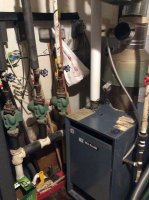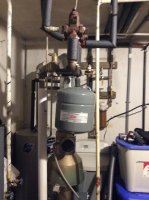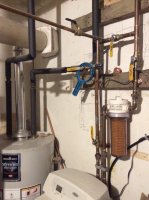The article linked above mentions the use of "Boost" feature when some setback is still desired.
The HTP UFT has the Boost feature, and it's very flexible with quite a few options.
(from the HTP UFT-80W install manual):
Boost Function:
When Outdoor Temperature Mode is used, Boost Function increases the CH
set point temperature by the Boost Degree temperature [10:bd]) at time
intervals (Boost Interval [11:bI]). A space heating demand must be active
without a DHW demand over the Boost Function set period of time (9:bt) for
boost to activate. Boost continues until the boiler reaches the maximum supply
temperature set point (6:cH) based on the outdoor reset curve. The boiler will
return to normal operation after the thermostat is satisfied.
Range: 0 - 120 min
NOTE: “0” means boost function is OFF.
Boost Degree:
Sets the temperature added to the boiler target set point based on the Outdoor
Temperature Mode reset curve.
Range: 5 - 15F
Default: 10F
Boost Interval:
Sets the interval time when the boiler will increase the temperature by the Boost
Degree. Ex: Initial Boost: 10F. After 20 MIN Interval: Boost will increase CH set
point temperature another 10F. After another 20 MIN Interval: Boost will
increase CH set point temperature another 10F. This will continue until the
boiler reaches the maximum supply temperature set point (6:cH) based on the
outdoor reset curve, or until the thermostat is satisfied.
Range: 0 - 120 MIN
Default: 20 MIN
The HTP UFT has the Boost feature, and it's very flexible with quite a few options.
(from the HTP UFT-80W install manual):
Boost Function:
When Outdoor Temperature Mode is used, Boost Function increases the CH
set point temperature by the Boost Degree temperature [10:bd]) at time
intervals (Boost Interval [11:bI]). A space heating demand must be active
without a DHW demand over the Boost Function set period of time (9:bt) for
boost to activate. Boost continues until the boiler reaches the maximum supply
temperature set point (6:cH) based on the outdoor reset curve. The boiler will
return to normal operation after the thermostat is satisfied.
Range: 0 - 120 min
NOTE: “0” means boost function is OFF.
Boost Degree:
Sets the temperature added to the boiler target set point based on the Outdoor
Temperature Mode reset curve.
Range: 5 - 15F
Default: 10F
Boost Interval:
Sets the interval time when the boiler will increase the temperature by the Boost
Degree. Ex: Initial Boost: 10F. After 20 MIN Interval: Boost will increase CH set
point temperature another 10F. After another 20 MIN Interval: Boost will
increase CH set point temperature another 10F. This will continue until the
boiler reaches the maximum supply temperature set point (6:cH) based on the
outdoor reset curve, or until the thermostat is satisfied.
Range: 0 - 120 MIN
Default: 20 MIN




